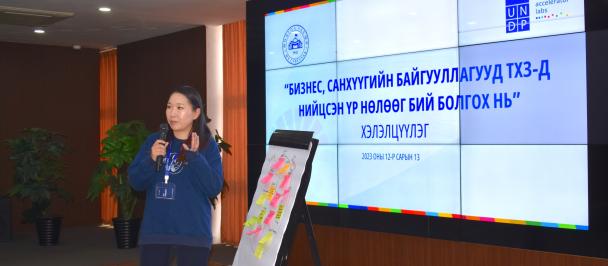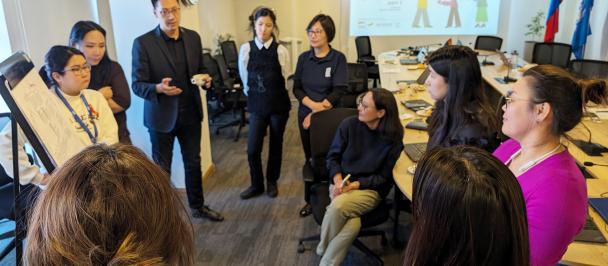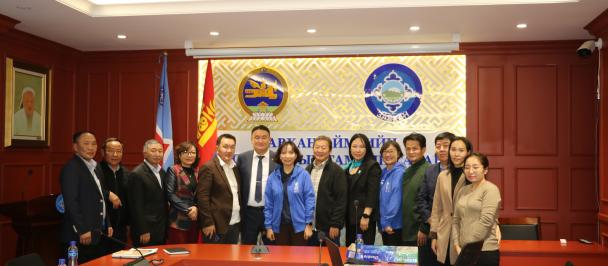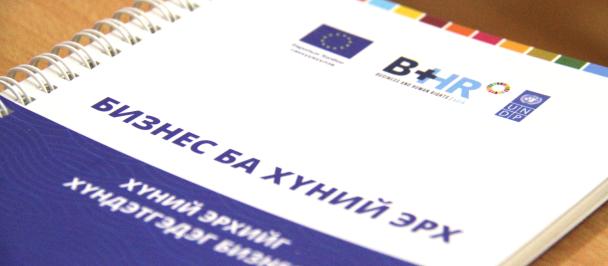Towards system transformation: Portfolio Approach
December 5, 2023
UNDP is on a big quest to transition from project management to system transformation by applying a PORTFOLIO APPROACH. System transformation is a comprehensive change in the structure and principles of a complex system to address critical challenges and achieve long-term sustainability.
The first question that might come to mind is: What is it?
Given that development challenges are comprehensive and systemic, UNDP's response capacities should align with similar principles. The portfolio approach enables it via:
- Addressing Root Causes: to tackle the underlying issues and root causes of problems rather than just addressing symptoms.
- Generating Long-term Impact: to focus on creating lasting positive change, which is crucial for system transformation.
- Aiming for Efficiency and Effectiveness: to streamline processes and eliminate inefficiencies within systems.
A second question that might create wonder is: why is UNDP applying this approach?
Greater impact. This approach seeks to deliver a greater impact by developing and scaling complementary interventions targeting multiple points in complex systems. The portfolio serves as a platform for strategic learning, allowing UNDP to gain insights, refine aligned interventions, and ultimately achieve a greater impact.
Collaboration. A portfolio-based approach also empowers UNDP teams to maximize their effectiveness while enhancing and complementing existing thematic areas by creating synergies across initiatives and promoting collaboration to achieve shared objectives.
Finally, a burning question: what does it look like to implement the portfolio approach in practice?
In a bold move, UNDP in Mongolia decided to implement two portfolio approach exercises: one of which is: the Sustainable Natural Resource User Groups´ Livelihoods and Environment Portfolio.
- Step 1. Build coherence.
In this step, we established the strategic direction it INTENDS to follow to foster alignment and synergies within existing initiatives and identify opportunities for new interventions.
Firstly, it is necessary to emphasize that one of the most challenging issues in Mongolia is the growing imbalance between the traditional livelihood of nomadic herders and other natural resource user groups, such as forest users, and their impact on the very nature that they depend on.
Indeed, herders tend to increase their livestock, currently reached over 71 million animals, which is causing a significant environmental impact. Close to 80% of the landscape is grazed beyond its capacity in some degrees, resulting in the loss of biodiversity. While the herders acknowledge and face disappearing pastureland, they struggle to change everyday practices and are largely uninformed about ways to shift to more sustainable herding.
In this context, it is important to understand how UNDP is working on this systemic problem, which has various contributing factors listed below.
Map of the system problem related to the Sustainable Natural Resource User Groups´ Livelihoods and Environment Portfolio
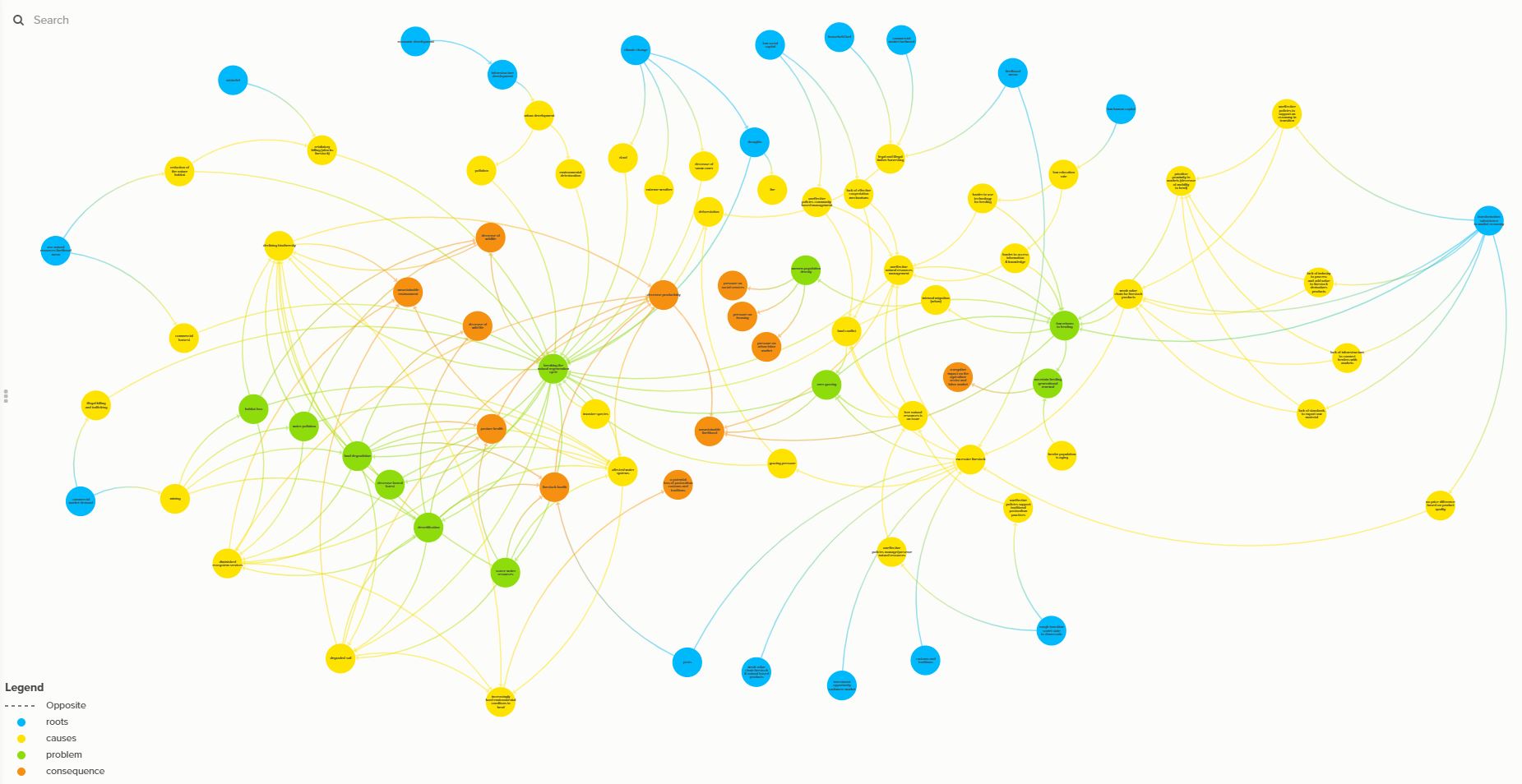
Elaborated by Ana M. Grijalva, Head of Exploration of the Accelerator Lab (August 2023)
The shift from individual practices of herding and natural resource activities as lifestyles to market-driven systems, where decisions and practices are primarily influenced by market forces, is affecting the natural regeneration process of the environment. In the past, herders lived by herding animals and using natural resources for their own needs. However, things have changed. Nowadays, herders make decisions about their livestock and lifestyle based on market trends. This shift is affecting how the environment naturally recovers. Challenges, including prioritization of quantity over quality of livestock, excessive grazing, a limited livestock market, and the absence of quality-based pricing for livestock products, lead to a decrease in long-term productivity and unsustainable livelihoods.
Herders face human capital constraints due to limited access to information and technology, an aging population, and low education levels, posing barriers to strategic decision-making. Additionally, social capital limitations, including little experience in collective action, and ineffective incentives to address pasture-related issues and the utilization of natural resources, result in limited cooperation for conservation efforts or sustainable practices.
Effective pastureland management, including rotation and protective measures, is vital. Individual herders have limited influence over pasture management. Therefore, it is recommended that groups of herders who share the same pastureland collaborate on a comprehensive management plan within their respective territories. However, herders' independent nature can pose a challenge to collective cooperation.
Traditional livelihoods are at risk, forcing people to decide between staying in these challenging conditions, which are getting worse with climate change, or moving to urban areas for work. For instance, 2009‐2010 dzud winter disaster was particularly devastating, when 22% (10 million animals) of the national herd perished. The disaster directly affected nearly 1/3 of households.
Field trip to the rural area: shearing sheep
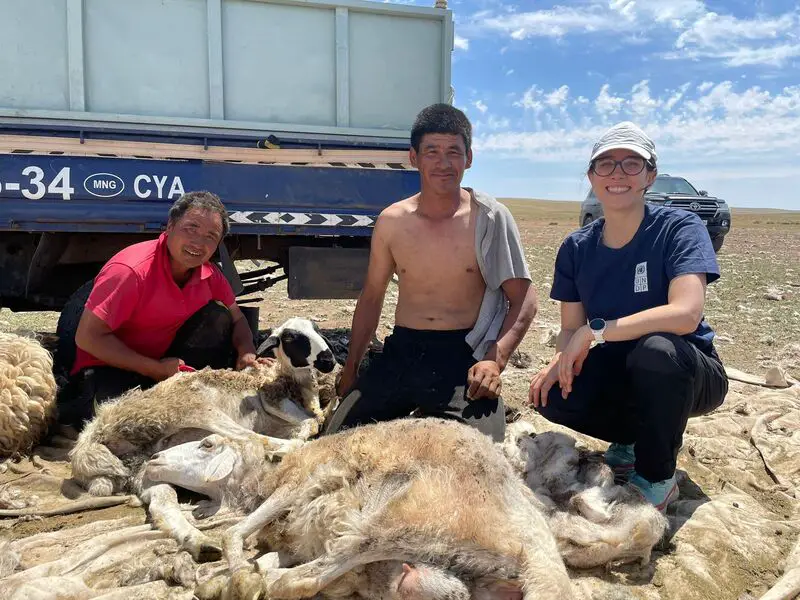
Baruun-Urt, June 2023
In this complex reality, UNDP intends to contribute to a transition from nature-based activities as a subsistence activities to a sustainable production mechanism while preserving culture and tradition, protecting the environment, and ensuring well-being.
- Step 2. Reaffirm intent to transform.
In this next step, we reaffirm our commitment to transformation by altering the TEAM STRUCTURE and work methods to facilitate the shift toward systems transformation and portfolios.
UNDP in Mongolia demonstrated dynamic capacity in organizing personnel under a portfolio approach, implementing a new way of working that fostered new synergies among senior management, programme leaders, project managers, and Accelerator Lab members. A governance model for the design and implementation of the portfolio was established, with the aim of addressing financing limitations and building a strong ecosystem of partners aligned with the intent.
- Step 3. Design interventions and socialize portfolio
This step aims to POSITION UNDP's work within the broader systemic problem. With this information, it becomes easier to align interventions that contribute to creating widespread effects within the system. Also, there are opportunities to identify new interventions, mobilize resources, and include stakeholders as part of this process.
We have five ongoing projects related to the portfolio intent that work on i) scaling national plans on land-use and agriculture (SCALA), ii) developing financial solutions to bridge the gap on biodiversity plans (BIOFIN), iii) sustaining a dialogue around cashmere production (MSCP), iv) improving adaptive capacities (ADAPT), and v) ensuring resilience (ENSURE) of rural communities.
Workshop with the portfolio core team

Ulaanbaatar UN House, August 2023
The activities of each of these projects were aligned and interconnected to collectively drive change within the system through three key shifts.
- Shift 1: Herders and other natural resource user groups will harmonize their way of life, customs, and traditions with the demands of a growing market economy and a changing environment.
- Shift 2: The government will find effective mechanisms to implement policies that support herders in this immersion while preserving nomadic herder culture and the environment.
- Shift 3: Markets and government at the national and local levels will work together to design and implement a logistics system, commercialization strategy, and production mechanism to add value to all derivatives from livestock products.
Building on this effort, we will elaborate a narrative based on this comprehensive framework to strengthen partnerships, achieve impactful outcomes, and deploy new financial strategies.
- Step 4. Implement Interventions
This step aims to GAIN initial INSIGHTS into the system and refine UNDP's policy positioning through interconnected interventions.
UNDP Mongolia Country Office is exploring potential avenues of implementing joint efforts among the five projects related to the portfolio intent in two specific sub-provincial administrative units: Ikh Uul soum and Tosontsengel soum. In the following stages, there will be efforts to generate a set of practices that capture learning and aim to adapt by transforming it into actionable steps.
To collaborate on this new way of working and be part of its exciting road ahead, contact myagmarjav.serjkhuu@undp.org and zoljargal.gantumur@undp.org.
Ana Grijalva: Head of Exploration, Accelerator Labs, UNDP in Ecuador

 Locations
Locations